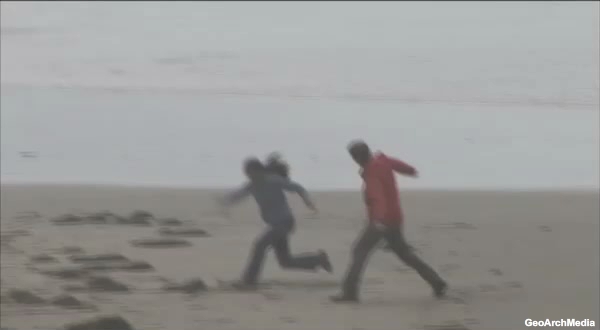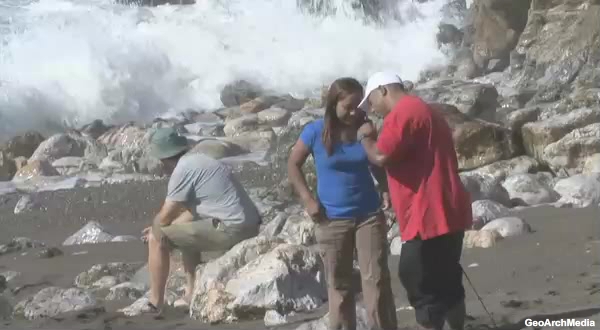Produced by The COMET® Program
Before a Tsunami
Tsunamis can come from both distant and local sources. Either type requires proper preparation.
Do you know what to do to make sure you and your family are prepared?
Question 1
Select the appropriate steps for preparing for a tsunami. (Choose all that apply.)
The correct answers are b) and c).
Question 2
Select the appropriate steps for preparing for a tsunami. (Choose all that apply.)
The correct answers are a) and d).
Question 3
Select the appropriate steps for preparing for a tsunami. (Choose all that apply.)
The correct answers are a), b) and d).
These actions are steps you should take to make sure you and your family are prepared in case a tsunami happens. Being prepared for a tsunami means not planning to go to the beach to surf or take photographs, or waiting for a receding wave to go beach-combing. It's also important to know that a tsunami is usually more than one wave and that subsequent waves can be bigger. Know your safe zone and how to get to it, and be prepared to stay there until authorities tell you it is OK to return to areas within the hazard zone.
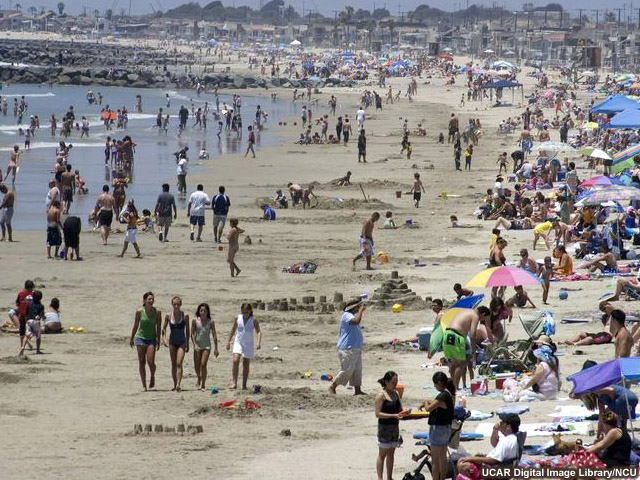
Preparing ahead of time can save your life and prevent potential chaos if an event occurs. Your preparations should account for where you might be when you feel an earthquake or hear the siren.
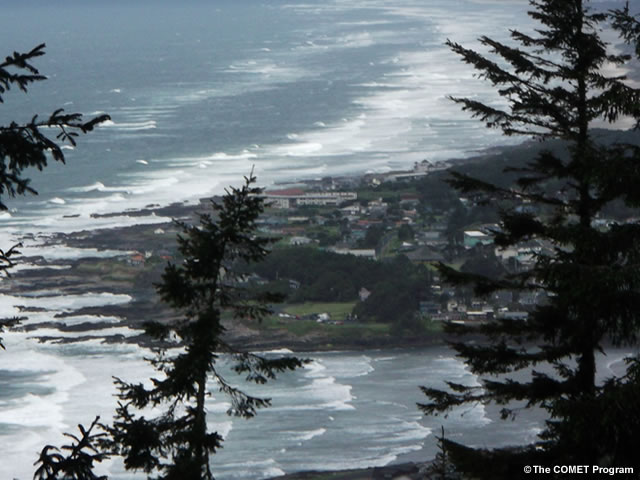
What if you are at school and your parents are at work? What if you are at a friend's house?
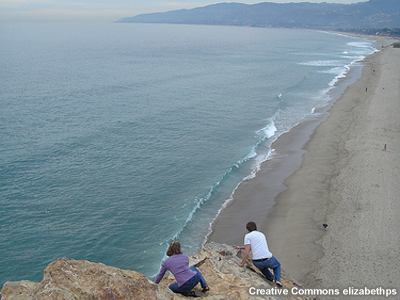
What if you are vacationing in a tsunami-prone area? We'll step through some of the actions involved in preparing for a tsunami so that by the end of this lesson you'll be on the way to developing your own family tsunami plan.
Tsunami Safety
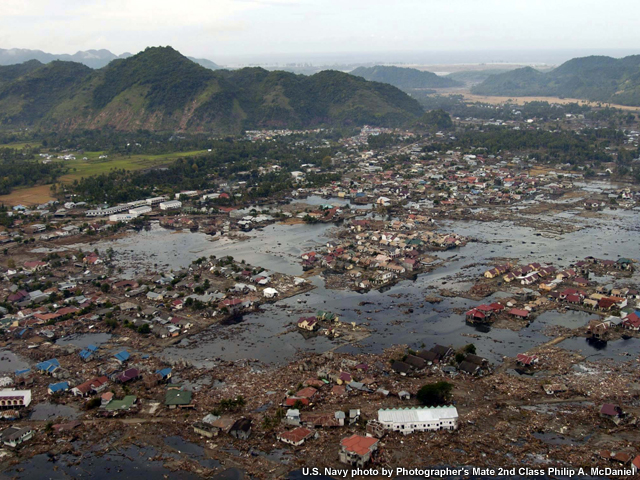
In low-lying areas, tsunami flooding can reach quite a distance inland.
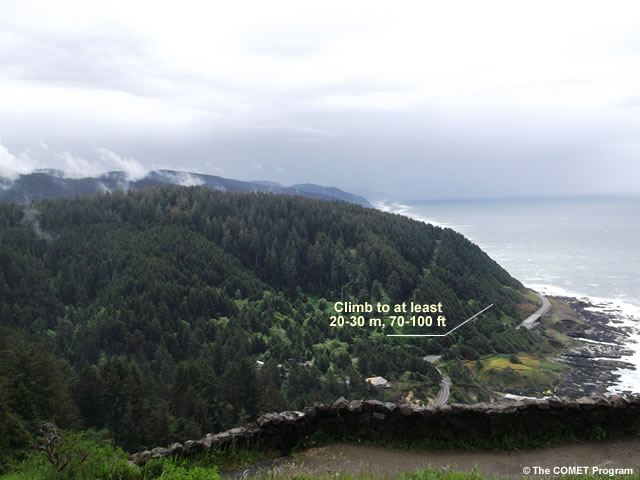
One safety message to remember is that, if possible, you should climb an area of at least 20 to 30 meters (70 to 100 feet) elevation, or about the height of a seven-story building.
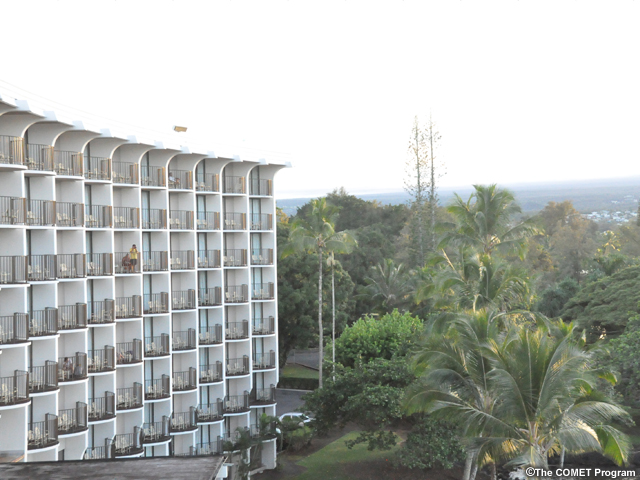
If you can't get to a high location, an upper-floor of a concrete building can offer protection. This alternative should only be used in there is no other option or if officials specifically direct you there.

In any tsunami, always evacuate beaches, waterways, and low-lying areas. Tsunami waves can also travel up rivers, causing flooding at locations not directly along the coast.
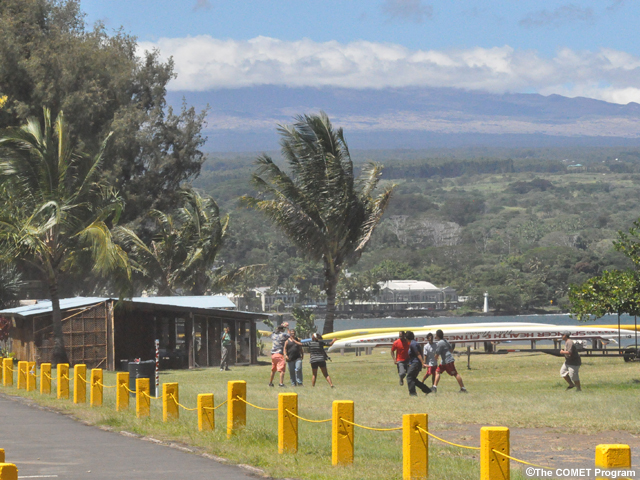
In either a distant-source or local-source tsunami, emergency officials will have lots that they need to be doing to prepare your community and attend to damage, so you should not expect personal attention from them. Follow your plan and look out for yourselves and your neighbors to make sure you all stay safe.
Local Source Tsunami
For a local source tsunami, feeling a strong earthquake--one that knocks you off your feet or lasts for 20 seconds or more—might be the best signal that there is danger. In this case, you will have to move quickly, but you should follow your plan and not panic.
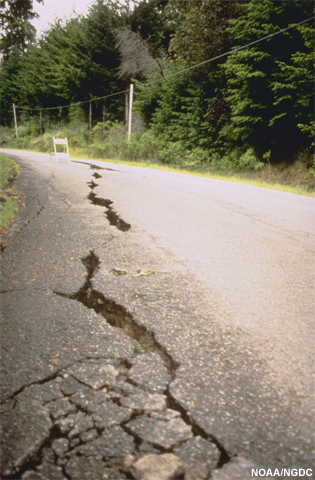
Keep in mind that there might also be local earthquake damage that could hamper your way to safety. Getting to safety on foot is a better option than a car, because roads could be damaged, have debris, or otherwise be impassable, and your family's car might not be accessible or operable.
Distant Source Tsunami
If you did not feel an earthquake, you might hear a siren instead, and should immediately seek additional information about the tsunami threat. Keep in mind that not all locations might have a siren, and be prepared to promptly follow instructions from local officials.
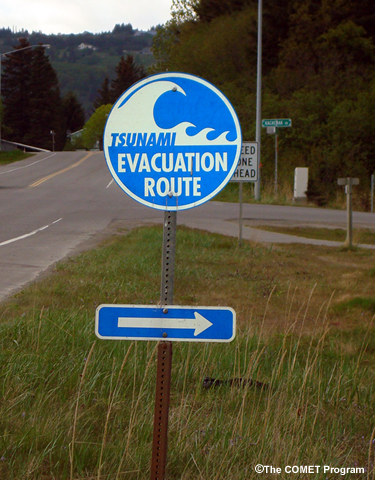
If you live within a tsunami hazard zone, your family tsunami plan should document the best route to get to high ground.
If you are visiting a beach community, head for the nearest high ground or follow the tsunami evacuation signs to get to safety.
Planning Ahead
Additional Resources:
Pre-event Checklist
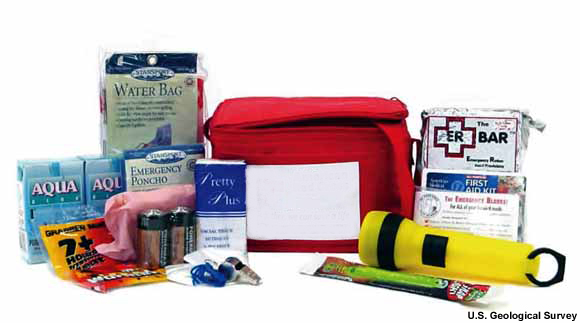
One step in being prepared for a tsunami or other disaster is to have an emergency preparedness kit ready in your household. This kit will be useful if your family has to evacuate or if you are in an area damaged by an earthquake. It can also be useful for many other types of disasters or emergencies.
Do you know what an emergency preparedness kit should contain? Let's identify the items to put into a kit. Then, you can work at home with your family to build your own kit.
View the items to include in your preparedness kit.
Here are the items you should have packed in the kit:
- Water: One gallon per person per day for at least three days
- Food: A three-day supply of non-perishable food for your whole family
- Non-electric can opener
- Battery-powered or hand crank NOAA Weather Radio
- Flash light
- Extra batteries and/or solar charger
- First aid kit
- Whistle
- Plastic sheeting and duct tape
- Wrench, pliers, and other tools
- Local maps
- Cash, checkbook, credit cards
- Cell phone, preferably with solar charger
- Food and water for your petPersonal items including medications, diapers, infant formula
- Important family documents, such as insurance papers
- Chlorine bleach or disinfectant to purify water
- Fire extinguisher
Additional items:
- Disposable dishes and utensils
- Books, puzzles, or games for entertainment
This kit will be useful in all types of emergency situations, including tsunamis as well as other natural hazards. Make sure everyone in your family knows where it is in case you need to grab it very quickly.
Now that you are tsunami-aware and know how to assemble your emergency preparedness kit, print out this pre-event checklist and fill in the blanks to make sure you and your family are ready for a tsunami. The completed checklist will essentially become your family tsunami plan. Keep a copy of this list at home and at school so that the information is always handy.
During the Event
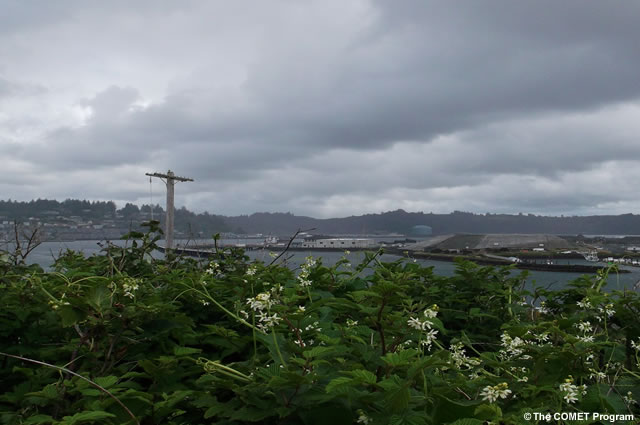
We all hope there won't be a devastating tsunami in our communities, but if you live along the coast you need to know the signs and be prepared.
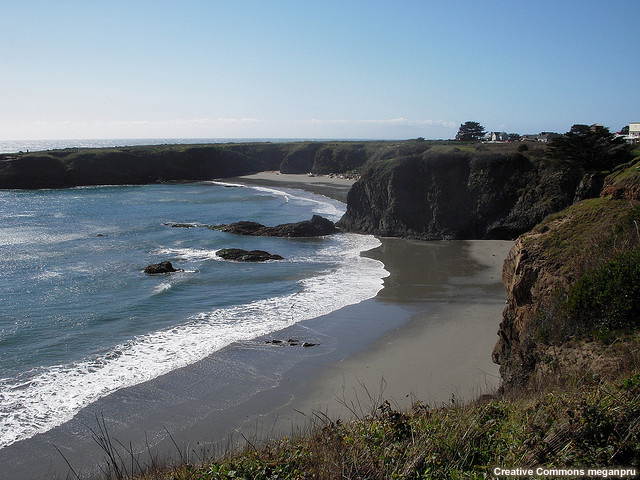
Remember, if you see the water level receding or rising rapidly, get away from the shore and move to higher ground immediately. Do not go down to the beach. If the water recedes, you need to get quickly to higher ground or to an upper floor of a tall building, preferably long before you see the wave.
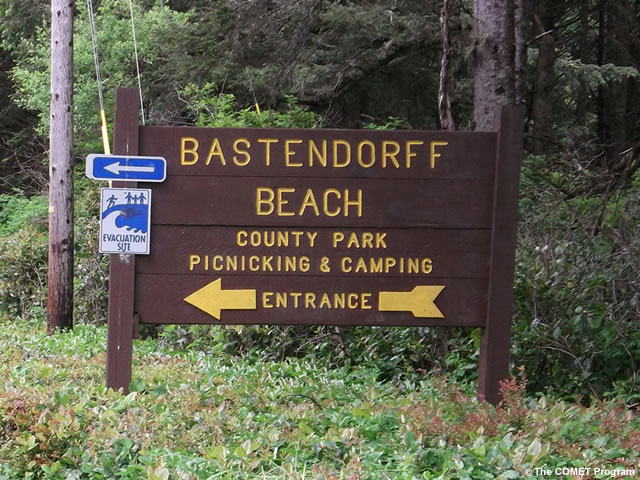
Stay at your pre-determined evacuation spot until authorities tell you it is safe to leave. Return home only after local officials tell you it is safe to do so.

If tsunami flooding does occur, you will likely not be able to reenter the inundation zone for at least 12 hours.
After the Event
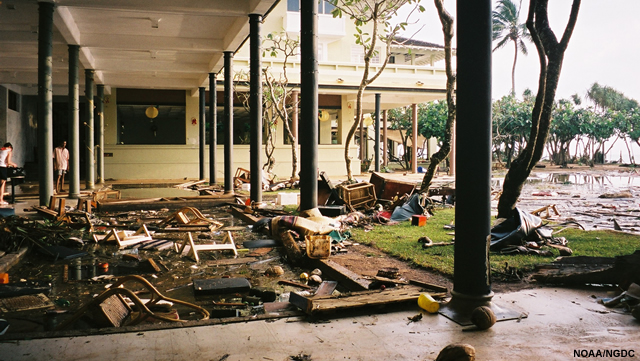
If your home has been damaged and it's not safe to return, follow the official instructions regarding shelters or go to a location where you will be able to stay—perhaps the house of a relative or family friend. This location should be pre-determined in your family tsunami plan.
Summary Activities
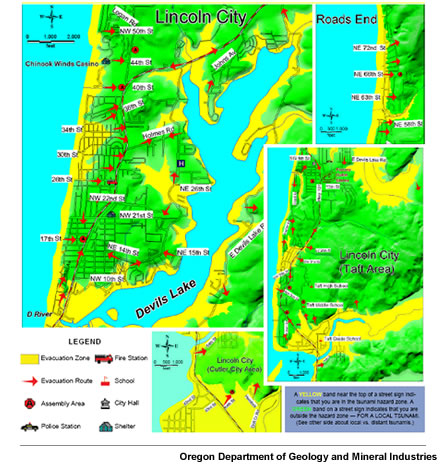
Knowing about your community's risks for a tsunami, the areas that are vulnerable, and the areas that are safe are the first steps in preparing for an event. You can find information about tsunami evacuation zones online.
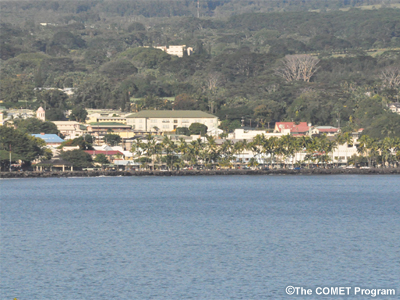
If you are traveling to a coastal area, acquaint yourself with any risks at your destination, and make sure you identify safe areas that you can get to in case of an emergency.
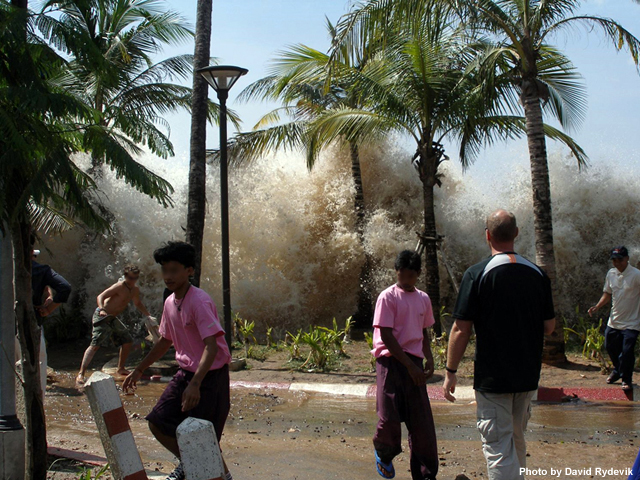
You can help your family, school, and community be tsunami aware by understanding:
- the sources for tsunamis that might threaten your area
- the warning signs that a tsunami is approaching
- information and actions to stay safe if a tsunami occurs
Build a Tsunami Preparedness Poster
Take what you have learned here to make a tsunami preparedness poster for your school or community.
Use the graphics available in the media gallery (access from the Resources page) to help put together a tsunami poster that you will share with your classmates and family to help them understand tsunamis and tsunami safety.
Make sure to customize the poster to be relevant to tsunami dangers in your area. You might want to add some of your own photos and images to the poster, particularly if your community has tsunami evacuation signs or hazard maps.
Prepare Your Tsunami Plan
If you have not already done so, complete the checklist presented in this lesson to help your family put together a tsunami plan. Also put together your emergency preparedness kit. This way, if an event occurs, everyone will know what to do and have what they need to be safe.
Click here to return to the 3.5 Hours Page.

